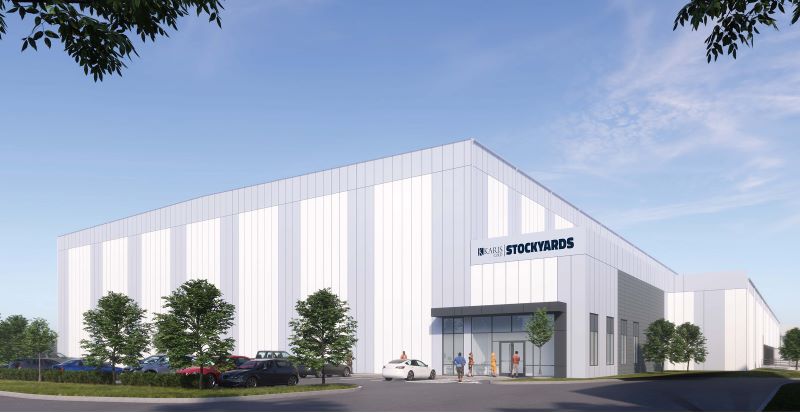November 2023
Suburban Chicago Office Markets Have Own Narrative Among Downtown Resurgence

Despite some negative headlines, Downtown Chicago’s office market has displayed an impressive resilience in the wake of the pandemic. In fact, based on recent data by Savills, Q3 2023 marked a resurgence, with lease transaction volumes reaching the second-highest point since the pandemic began.
“Landlords who consistently maintain and invest in their properties, take the initiative to create spec suites, and provide amenities in the B/C office segment are the ones who secure tenants,” Steve Chrastka said. “It’s a competition where buildings that ‘deliver’ outperform those that ‘fall short’ in the race for lower vacancy rates.”
Not to mention, touring levels among tenant advisors saw an increase throughout the summer for both direct and sublease opportunities, which is a promising sign as the market gears up for the fourth quarter.
Looking at overall vacancy, Savills Vice Chairman, Co-Head Chicago Region Eric Feinberg observed a substantial increase of 1.2 million square feet of sublease space in the market during Q3. For premium office buildings, he noted a positive absorption pattern driven by two distinct trends: (1) the “flight-to-quality” phenomenon, where financially capable tenants are seizing the opportunity to move into modern, more efficient workspaces in updated buildings, and (2) the “flight-to-capital” trend, emerging as tenants, concerned about rising interest rates and economic uncertainty, meticulously assess office loan maturities and the financial stability of their landlords, thereby determining which property owners are in sound financial standing.
In terms of rental rates, Feinberg said prime market face rents are on the rise. However, net effective rents, representing the actual return to the landlord after financial concessions or tenant inducements, are decreasing as the market remains favorable to tenants, particularly for those well capitalized.
And while there is increased demand for premium Class A+ buildings, even with their higher pricing, the same cannot be said for many of the Class A-/B+ buildings.
So, what are the selling points being offered by the former to attract and retain tenants in this evolving market landscape?
Leasing activity, which is occurring predominantly at the top end of the market, is being driven by companies that seek an environment that encompasses all key criteria for employee engagement. This includes a workplace whose building offers substantial amenities, is in a public transit convenient location, and resides within an energetic neighborhood.
Feinberg said: “As a result of this demand, landlords are repositioning their properties to provide the scale and quality of amenities that these occupants desire. We are seeing landlords not suffering from financial distress deliver updated gyms and conference rooms, state-of-the-art technology, and more green spaces for tenants to gather outdoors.”
Properties located in live/work/play areas, typically on the outskirts of the downtown area, are reportedly witnessing a modest increase in leasing activity due to the vibrant atmosphere and increased foot traffic in these areas, which aligns with the preferences of many workers.
More specifically, the leasing activity in the Fulton Market and West Loop markets is thriving due to the influx of new properties and the vibrant atmosphere of the neighborhood. For several years, Fulton Market has experienced substantial demand because of its combination of live/work/play options, along with the range of amenities it provides. However, this demand has somewhat waned due to rising prices and less-than-ideal public transportation when compared to other submarkets. On the other hand, the West Loop remains the most highly sought-after submarket, especially in buildings along Wacker Drive. With companies recommitting to office spaces, Wacker Drive is witnessing an uptick in property tours for its access to public transportation, newer building options, and recent investment activity—all enhancing the overall employee experience.
“Employee engagement is highly influencing the office landscape as the more career-minded employees are in the office several or more days a week,” Feinberg said. “These team members view the chance to engage with mentors and contribute to collaboration in the office as a clear opportunity for career progression and growth. This is translating to the uptick in return-to-office numbers as more employees are seeing the benefit of being in the office when it comes to career advancement.”
Executives, of course, also want their employees back in the office more, with policies beginning to range from two to four days a week.
The future of the LaSalle Street Reimagined initiative, designed to breathe new life into the Central Loop area, also remains a matter of great interest, as it has the potential to significantly influence the local office market. During her tenure, former Mayor Lori Lightfoot revealed that five development teams had been chosen to advance the initiative, which involves allocating public funds to private developers interested in converting office spaces into residential units in an effort to bring vitality to the corridor, so long as at least 30% of the new units were made available at affordable rates. Collectively, the five selected projects requested $307 million in tax increment financing (TIF) funds from the LaSalle Central TIF district, with one project, led by Chicago-based Riverside Investment & Development at 135 S. LaSalle St., requesting a $115 million subsidy to deliver 430 apartments and a combination of retail and event spaces.
But according to a recent Crain’s article, Mayor Brandon Johnson has not yet committed to LaSalle Street Reimagined.
Feinberg, when asked about the potential implications for the office sector if the initiative receives or does not receive the public subsidies it was originally planned to have, remains optimistic and said that while TIF or other governmental programs are essential to “revitalize” the area, the biggest impetus for the re-emergence of the Central Loop will be the “Google-Effect” as they begin to transform the Thompson Center. That project will likely be delivered prior to any office redevelopment and is supposed to bring up to 1,000 employees to the LaSalle Street Corridor.
Conversely, Suburban Chicago’s office market tells a bit of a different story. That said, NAI Hiffman Executive Vice President Steve Chrastka emphasized that each suburban market has its own narrative. “It’s overly simplistic to state that the suburban office market is 24.6% vacant, as each market has specific reasons for varying vacancy rates across different classes of office space,” he said.
The north market has experienced a 27% vacancy rate for Class A office buildings due to the exodus of pharmaceutical companies. In contrast, O’Hare’s Class A vacancy rate is 19.5%, thanks to its advantages in location and accessibility.
And the differences in vacancy rates become even more complicated when looking at the property types individually. Single-story office space in the I-55 market, for example, boasts a vacancy rate of just 10% versus 20% for Class A. In the east/west market, the single-story vacancy rate is 15% versus 24.9% for Class A.
“Landlords who consistently maintain and invest in their properties, take the initiative to create spec suites, and provide amenities in the B/C office segment are the ones who secure tenants,” Chrastka said. “It’s a competition where buildings that ‘deliver’ outperform those that ‘fall short’ in the race for lower vacancy rates.”
Of course, technology and creative industries have also played a pivotal role in Suburban Chicago’s recent evolution. Tech companies, in particular, are making strategic moves, either relocating from downtown or adding suburban spaces with access to public transportation and educated workforces. Areas like Oakbrook and O’Hare have emerged as magnets, offering walkable high-end amenities and transportation options.
It used to be a straightforward notion: to discover growing markets, one needed to follow the population’s migration (i.e., Fulton Market). And while this is still true, Chrastka said it’s no longer so straightforward. In the wake of the pandemic, a reverse migration pattern has emerged, with more people returning to the suburbs.
“As this shift unfolds,” Chrastka said, “it’s the suburban submarkets that have key attributes—quality housing, an educated workforce, accessible public transportation, excellent schools, and enticing amenities—that are poised to become the focal points of office leasing growth.”
About NAI Hiffman:
NAI Hiffman is one of the largest independent commercial real estate services firms in the US, with a primary focus on metropolitan Chicago, and part of the NAI Global network. We provide institutional and private leasing, property management, tenant representation, capital markets, project services, research, and marketing services for owners and occupiers of commercial real estate. To meet our clients’ growing needs outside of our exclusive NAI Hiffman territory, we launched Hiffman National, our dedicated property solutions division, which provides property management, project services, and property accounting services across the country. NAI Hiffman | Hiffman National is an award winning company headquartered in suburban Chicago, with more than 250 employees strategically located throughout North America.
About Hiffman National:
Hiffman National is one of the US’s largest independent commercial real estate property management firms, providing institutional and private clients exceptional customized solutions for property management, project management, property accounting, lease administration, marketing, and research. The firm’s comprehensive property management platform and attentive approach to service contribute to successful life-long relationships and client satisfaction. As a nationally bestowed Top Workplace, and recognized CRE award winner, Hiffman National is headquartered in suburban Chicago, with more than 250 employees nationally and an additional six hub locations and 25 satellite offices across North America.


